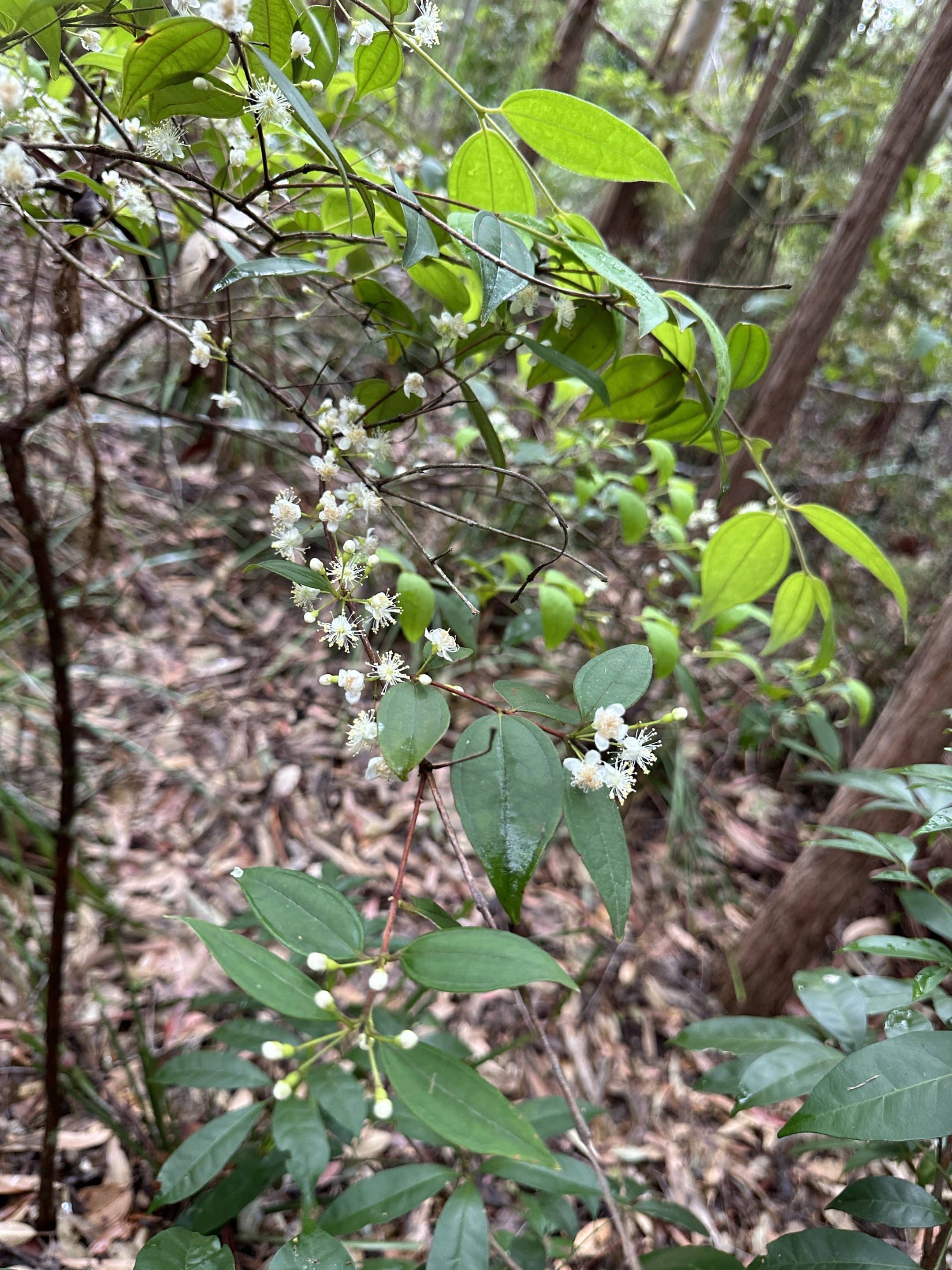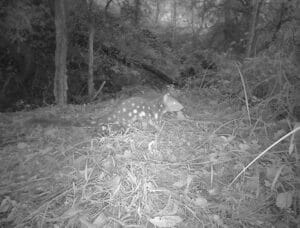This handsome shrub (or small tree) was once so abundant in our region that it was easily overlooked.
In our area, it would generally grow to a 5-10m shrub, often suckering after fire to form thickets. In ideal conditions, it can grow to 25m, but I have never seen it reach these proportions in our area. Its distinctive reddish-bark is flakey and fissured on narrow stems. Pretty white flowers in spring attract pollinators by producing a sweet perfume. The opposite leaves are distinctively three-veined at the base, with pale-hairy undersides that make it easy to identify in the field. It is rare to see Rhodamnia rubescens in the wild without signs of Myrtle Rust (Puccinia psidii)- the distinct yellow-orange lesions on the leaves are a tell-tale sign that the host plant is in seriously poor health. This may be due to its soft hairy nature, which tends to trap spores and leads to infection. All parts of the plant are susceptible to this insidious pathogen, including the seeds. Which means that even if a plant flowers and fruits, the seeds may not be viable.
Myrtle Rust arrived in 2010 and marched quickly up the coast from its origin in Mangrove Mountain and proceeded to wipe out local populations of Scrub Turpentine and other susceptible species in the Myrtaceae family, such as Rhodomyrtus psioides.
This abrupt decimation of Rhodamnia rubescens across the State resulted in its listing by the NSW Scientific Committee as “Critically Endangered” under the Biodiversity Conservation Act (2016) at a State Level in 2019, and then with a Federal listing under the EPBC Act (1999) in 2020.
This year has been the first in many seasons that I have seen this species flowering, and forming fruit in the wild. The small glossy berries turn from green to magenta, and then black when ripe. The globular berries ripen from October to December, and are eaten by the Brown Cuckoo-Dove, Green Catbird and Figbird, who are our vectors for distributing the species in the wild.
Hopefully this crop of fruit will produce viable seed and a more rust-resistant strain of Rhodamnia rubescens has developed naturally.

Image Credit Isabelle Strachan




